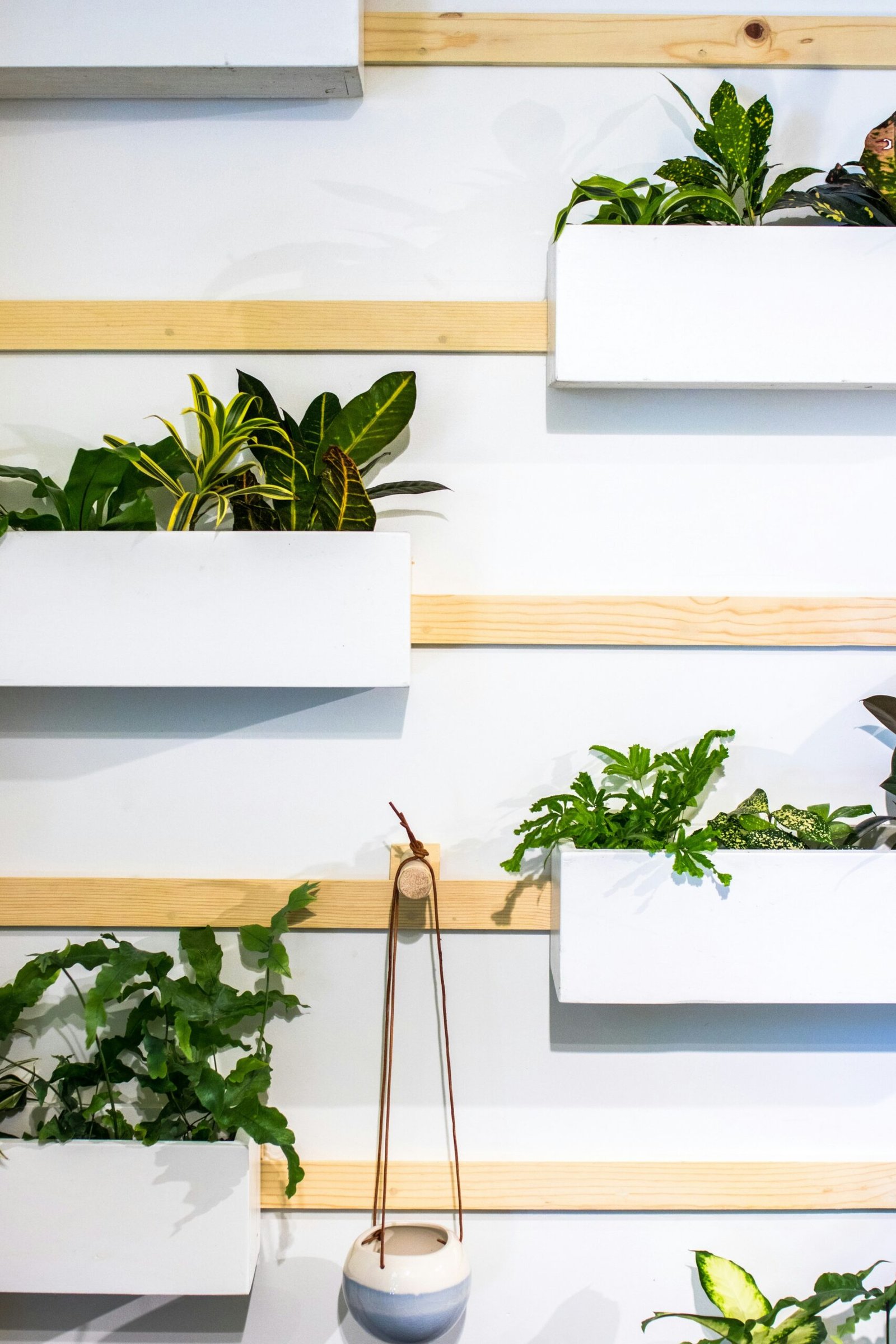Are you curious which home office decor ideas will define 2025 and how you can make your workspace feel modern, comfortable, and functional?
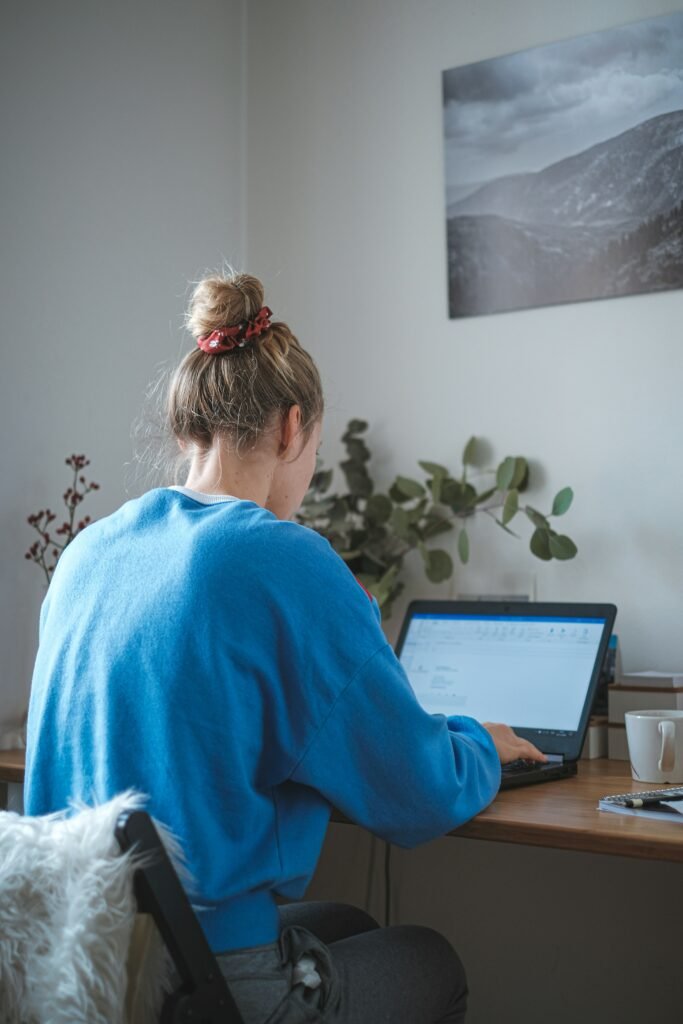
What Are Trending Home Office Decor Ideas For 2025?
This article breaks down the top trends, practical strategies, and styling tips so you can design a home office that fits your work habits and personal taste. You’ll find actionable guidance on color palettes, furniture choices, tech integration, small-space solutions, budgeting, and how to future-proof your setup.
Key Themes Shaping 2025 Home Offices
These overarching themes will guide the details you choose for your office. Each theme influences materials, layout, and decor decisions, and understanding them will help you build a cohesive look.
Biophilic and Nature-Forward Design
You’ll see stronger emphasis on bringing nature into the workspace. Living plants, natural materials, and organic shapes help reduce stress and boost focus, and they’re integrated into furniture and lighting design.
Plants aren’t just decoration — they’re part of a mood and performance strategy. Consider planters that double as room dividers or shelving that incorporates plant space.
Warm Minimalism
Minimalism keeps evolving. In 2025, minimalism isn’t stark or purely white — it’s warm and tactile. Clean lines pair with soft textures and muted color tones so your space looks calm without feeling clinical.
You’ll aim for fewer pieces but choose higher-quality ones that add warmth: a wooden desk, a textured rug, and ambient lighting that softens the room.
Mixed Materials and Rich Texture
You’ll notice more layered textures and mixed materials in furniture and accessories. Think wood, stone, brushed metal, woven fibers, and ribbed glass in the same space to create visual interest.
Combining textures makes minimal layouts feel inviting. Use throw textiles, woven baskets, and matte finishes to balance shiny or slick surfaces.
Multi-Functional and Flexible Spaces
Work, wellness, and home life keep intersecting, so your workspace must be adaptable. Expect furniture designed for hybrid uses: desks that fold or expand, screens that turn into whiteboards, and storage that transitions into home decor.
You’ll plan for alternative postures and tasks—writing, videoconferencing, reading—so your space supports varied activities.
Sustainability and Circular Design
Sustainable materials, low-VOC finishes, and secondhand finds are more prominent. Circular design principles—repairable furniture, modular components, accessories made from recycled materials—lead the market.
You’ll look for certifications, transparent sourcing, and vintage pieces that add character and lower environmental impact.
Smart, Integrated Technology
Technology becomes less obtrusive and more integrated: built-in wireless chargers, under-desk cable channels, smart lighting tuned to your circadian rhythm, and discreet speakers.
The goal is to make tech enhance the experience without overwhelming the aesthetic.
Comfort-First Ergonomics
Ergonomics becomes an integral part of decor — attractive adjustable chairs, stylish monitor arms, and desks that allow sit-to-stand transitions are central. You’ll consider posture, movement, and comfort as design drivers.
A comfortable setup reduces fatigue, helps sustain productivity, and supports long-term health.
Quick Trend Comparison Table
| Trend | What it looks like | Key pieces to include |
|---|---|---|
| Biophilic | Plants, natural light, organic shapes | Large potted plant, wood furniture, stone accents |
| Warm Minimalism | Clean lines with cozy textures | Neutral palette, textured rug, simple shelving |
| Mixed Materials | Blend of wood, metal, glass, textiles | Ribbed glass pendant, brass hardware, woven baskets |
| Flexible Spaces | Foldable, modular, dual-purpose items | Expandable desk, room divider, convertible seating |
| Sustainable | Recycled/upcycled, low-VOC finishes | Secondhand desk, recycled-fiber rug, bamboo plywood |
| Smart Integration | Built-in tech and cable solutions | Under-desk outlets, landscape lighting, smart switches |
| Comfort/Fit | Ergonomic furniture as focal point | Adjustable chair, monitor arm, footrest |
Color Palettes and Finishes
Color and finish choices set mood and influence productivity. 2025 trends lean towards warm neutrals with energizing accents, plus finishes that read handcrafted and durable.
Core Palette: Warm Neutrals
You’ll find warm beiges, greige (gray-beige), soft taupe, and muted off-whites dominating wall and larger furniture choices. These tones feel inviting and provide a calming backdrop for focused work.
Using warm neutrals helps balance technology’s cool look and makes lighting choices more forgiving.
Accent Colors: Muted Jewel Tones and Earthy Greens
Accent colors in 2025 favor muted jewel tones — soft teal, dusty terracotta, and deep amber — along with olive and sage greens. These colors add personality without overpowering the senses.
Accent with pillows, art, small appliances, or a statement chair to create focal points.
Finishes: Matte, Textured, and Satin Metal
Finishes shift from glossy to matte and tactile. Satin brass or smoked nickel hardware, matte ceramic planters, and raw-edge wood surfaces are popular. Textured wall finishes like plaster or limewash add subtle depth.
These finishes help spaces feel crafted rather than mass-produced.
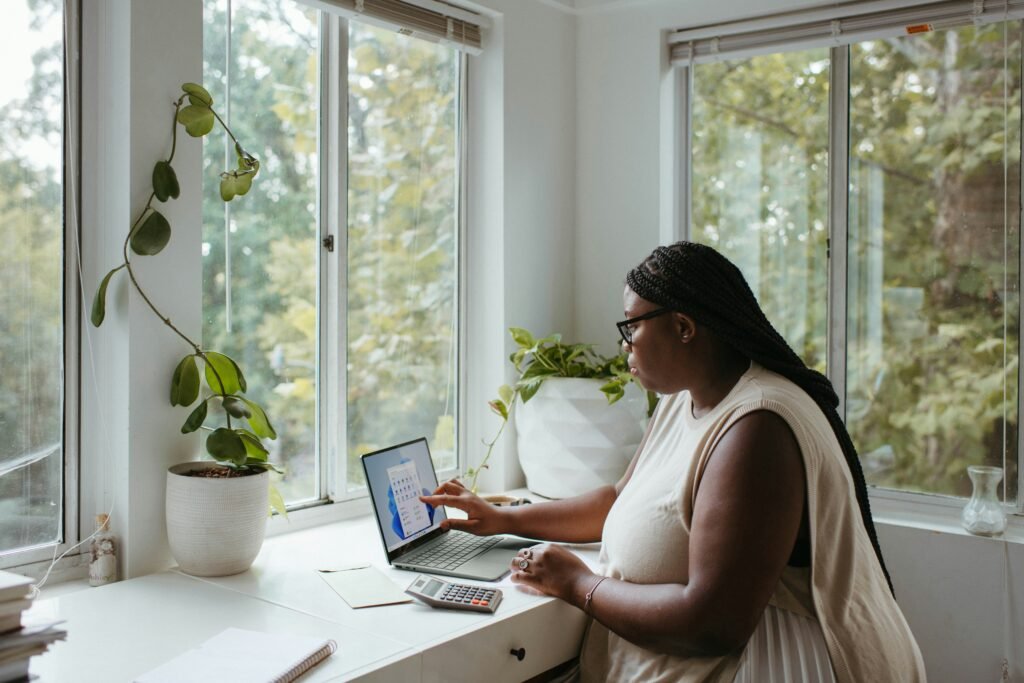
Color Combo Suggestions (Table)
| Primary Base | Accent Color | Metal/Trim Finish | Fabric/Textile Suggestion |
|---|---|---|---|
| Warm Greige | Olive Sage | Brushed Brass | Natural linen, boucle |
| Soft Taupe | Dusty Terracotta | Smoked Nickel | Wool, cotton-linen |
| Off-White | Muted Teal | Satin Black | Ribbed velvet, jute |
| Pale Beige | Deep Amber | Brushed Bronze | Handwoven cotton, suede |
Furniture and Layout Strategies
Selecting furniture and arranging the room will determine how efficient and pleasant your workday feels. Think long-term function plus short-term comfort.
Ergonomic Desks and Chairs
Choose a chair with lumbar support, adjustable height, and breathable upholstery. For desks, select a height-adjustable model so you can alternate between sitting and standing to reduce fatigue.
Spend more on your chair and desk mechanisms; these provide the most ergonomic benefit per dollar.
Flexible Layouts and Zoning
Zoning creates areas for different tasks—focused solo work, creative brainstorming, and video calls. You can use rugs, shelving, or screens to define zones in open rooms.
Position your main desk where you have comfortable light and a neutral background for video calls.
Smart Storage and Concealed Organization
Open shelving for display works well, but so does concealed storage for paperwork and cables. Use cabinets with integrated cable ports, drawers with organizers, and modular units that can be reconfigured.
Keep frequently used items within reach and archive the rest to reduce visual clutter.
Standing Desks and Movement-Friendly Furniture
Standing desks and stools that let you shift postures are key. Consider an adjustable desk with a reliable motor and a roomy surface for dual monitors or an extra laptop.
Add an anti-fatigue mat, a supportive leaning stool, or a compact treadmill if you want to incorporate light movement.

Desk Types Comparison Table
| Desk Type | Pros | Cons | Best Use |
|---|---|---|---|
| Fixed Wood Desk | Stable, aesthetic | Less flexible | Classic setups, dedicated spaces |
| Sit-Stand Electric Desk | Ergonomic, adjustable | Higher cost | Full-time workers, health-focused |
| Wall-Mounted Foldable Desk | Space-saving | Limited surface | Small apartments, guest spaces |
| Modular Desk System | Reconfigurable | Requires planning | Multi-use rooms, growing needs |
Lighting: The Right Light for Work and Mood
Good lighting balances task illumination and comfortable ambience. 2025 emphasizes layered lighting and smart controls to support well-being.
Layered Lighting Strategy
Layer lighting into ambient (overhead), task (desk), and accent (art/plant lighting). This allows you to tune the room to different activities and minimize screen glare.
Task lighting should be adjustable and color-temperature tunable.
Natural Light Maximization
Position your desk to take advantage of natural light without creating glare on screens. Use sheer curtains to diffuse brightness and prevent harsh shadows.
Natural light improves mood and circadian rhythm; maximizing it can make a big difference in your energy levels.
Circadian and Tunable Smart Lighting
Smart bulbs and fixtures that shift color temperature from warm in the morning and evening to cool during peak focus hours support your biological clock. Integrate with schedules or sensors for automatic adjustments.
Pair smart lighting with scenes for video calls, focused work, and wind-down time.
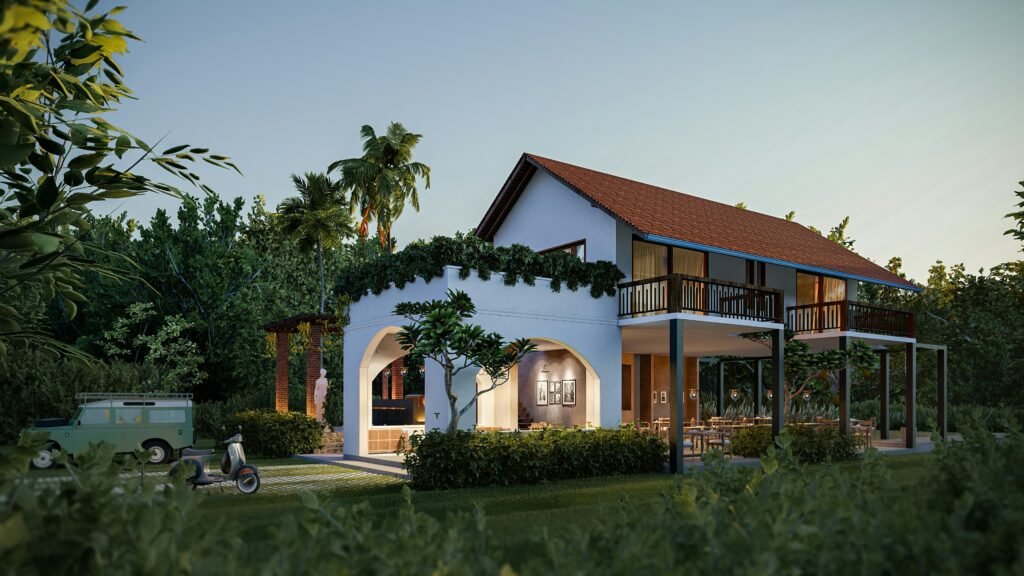
Lighting Tips and Fixtures Table
| Fixture | Recommended Use | Notes |
|---|---|---|
| Adjustable desk lamp with CRI 90+ | Task lighting | Position to the side to reduce screen glare |
| Pendant light with dimmer | Ambient | Use textured glass to soften light |
| LED strip under shelf | Accent | Great for backlighting monitors or shelves |
| Smart bulbs (tunable) | Circadian lighting | Program warm evenings, cool daytime |
Textures, Materials, and Surfaces
Material choice shapes touch and visual warmth. 2025 design values tactile surfaces that look pleasant close-up and feel resilient over time.
Natural Woods and Stone Accents
You’ll see walnut, oak, and bamboo paired with stone elements like concrete planters or marble accessories. Mix warm wood tones with cool stone to create balance.
Choose durable finishes if you expect heavy use, and consider veneers for budget-conscious builds.
Textiles and Soft Furnishings
Rugs, curtains, cushions, and throws soften acoustics and visuals. Natural fibers such as wool, jute, and linen are trendy for their texture and sustainability.
Layering textiles adds comfort and helps define separate zones within the office.
Metal, Glass, and Ribbed Materials
Subtle metal accents in matte or satin finishes add sophistication. Ribbed glass is a 2025 favorite for light fixtures and cabinet doors — it adds privacy and diffuses light elegantly.
Use glass sparingly to keep the room warm; balance with wood and textiles.
Sustainable Material Choices
Choose FSC-certified wood, recycled metal, low-VOC paints, and plant-based upholstery where possible. These materials reduce environmental impact and often age gracefully.
Upcycling and buying vintage reduce demand for new manufacturing and add unique character.
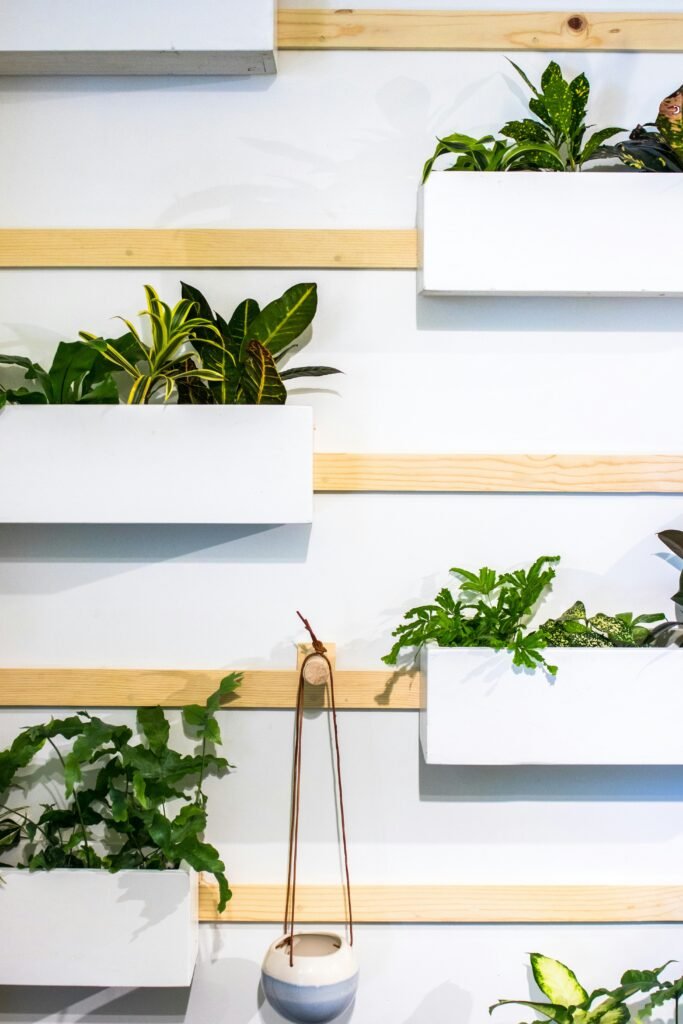
Tech Integration and Cable Management
Invisible tech is the hallmark of a polished 2025 home office. You’ll want power and connectivity that’s tidy and integrated.
Built-In Power and Wireless Charging
Desks with built-in outlets and flush wireless charging pads simplify cable clutter. Floor boxes and baseboard channels can tuck cords away from sightlines.
Plan power locations before installing furniture or shelving.
Cable Management Systems
Use under-desk trays, adhesive cable channels, Velcro straps, and grommets to route cords. Label cables to make maintenance easier.
Concealing cables protects them and makes cleaning simpler.
Acoustics and Sound Management
Soft surfaces, rugs, wall panels, and strategically placed bookshelves reduce echo and improve call quality. If you work with audio, consider acoustic panels that double as decorative elements.
White noise machines or sound-masking devices help reduce distraction if you have noisy housemates or street sounds.
Tech Integration Checklist Table
| Item | Purpose | Tips |
|---|---|---|
| Under-desk power hub | Centralize outlets | Choose surge-protected units |
| Wireless charging pad | Declutter surface | Integrate into desk or coaster |
| Monitor arm | Ergonomic screen placement | Clamp-mounted for flexibility |
| Acoustic panel | Improve sound quality | Use printed/fabric panels for style |
Decor Accents and Styling Tips
Accessories create a personal and inspiring environment. The best styling balances utility with personality.
Greenery and Planters
Use a mix of large floor plants and small desk plants for variety. Self-watering planters reduce maintenance, and displayed plant groupings create an intentional look.
Use planters in different textures — terracotta, woven, matte ceramic — to complement your palette.
Artwork and Personalization
Choose art that motivates or calms, depending on your work style. Rotating prints or framed photos makes the space feel refreshed without major changes.
Consider a gallery wall above storage or a single large statement piece behind your desk for video backgrounds.
Rugs and Layering
Rugs define zones and add warmth. Layer a natural fiber rug under a soft woven rug for textural contrast. Make sure rug sizes allow chair movement without catching.
If you have a hard floor, select a rug with a non-slip pad to keep the chair stable.
Shelving and Display Styling
Mix functional storage with curated objects. Group items by color or theme, leave breathing room, and incorporate plants and books to avoid looking staged.
Alternate horizontal stacks and vertical books to create rhythm and visual interest.
Small Space Solutions
Not everyone has a dedicated room. These ideas help you create efficient, attractive offices in compact footprints.
Micro Offices and Nooks
A dedicated corner with a compact desk, a vertical shelving unit, and task lighting can serve as a full workspace. Use vertical storage to maximize square footage.
Consider a narrow sacrificial surface for frequently used items and keep other items tucked away in closures.
Closet Conversions (Closet Office / “Cloffice”)
Closet offices give you an enclosed, productive space you can close off at the end of the day. Add a fold-down desk, slim drawers, and interior lighting for a polished micro-office.
Ventilation and adequate lighting are key when converting a closet into a workspace.
Portable and Foldable Options
If you need to set up and remove your office daily, use folding desks, portable monitor mounts, and soft storage that stashes in a closet.
A mobile cart can hold tech and be rolled away, freeing space for other activities.
Small-Space Furniture Guide Table
| Solution | Benefits | Best For |
|---|---|---|
| Wall-mounted fold-down desk | Space-saving, tidy | Studio apartments, guest rooms |
| Narrow console desk | Small footprint | Hallways, apartment corners |
| Floating shelves | Keep floor clear | Vertical storage needs |
| Rolling cart | Mobile storage | Temporary setups, shared spaces |
Budgeting and Sourcing
Designing a stylish home office doesn’t require overspending. Knowing where to invest and where to economize helps you achieve a high-end look affordably.
Where to Spend (Worth the Investment)
- Ergonomic chair and sit-stand desk mechanism
- Quality lighting (good CRI and dimmability)
- Durable flooring or a high-quality rug if on hard floors
- A solid monitor or monitor arm for posture
These items affect comfort and durability, so prioritize them.
Where to Save
- Decorative accessories like small desk lamps, plant pots, and wall art
- Secondary storage solutions, like baskets or small shelving units
- Certain textiles: you can get aesthetically pleasing options at lower cost with careful selection
Thrift, Vintage, and Upcycled Finds
Secondhand marketplaces are great for unique desks, vintage chairs (which can often be refurbished), and decorative pieces. Upcycling can yield statement furniture at low cost and align with sustainable goals.
Refinish or reupholster vintage pieces to match your palette and get a custom look.
Cost Range Table (Typical Price Bands)
| Item | Budget | Mid-range | High-end |
|---|---|---|---|
| Ergonomic chair | $100–$300 | $300–$700 | $700+ |
| Sit-stand desk | $150–$400 | $400–$900 | $900+ |
| Rug | $80–$200 | $200–$600 | $600+ |
| Task lighting | $30–$80 | $80–$200 | $200+ |
Putting It Together: Sample 2025 Office Styles
These style profiles give concrete direction for translating trends into cohesive spaces that match your needs.
Warm Minimal Home Office
You’ll combine a warm greige wall color, a mid-century wood desk, a comfortable ergonomic chair upholstered in boucle, and a large neutral rug. Keep surfaces uncluttered with concealed storage and add a single statement plant.
Lighting: warm, dimmable pendant plus a flexible desk lamp. Artwork: one oversized abstract in muted terracotta.
Biophilic Tech Hub
You’ll orient the desk to a window, install living wall panels or large potted plants, and choose bamboo or walnut furniture. Integrate smart lighting that mimics daylight and acoustic panels covered in green fabrics.
Technology is streamlined into built-in charging and wireless connections to let the natural elements take focus.
Cozy Creative Suite
You’ll layer textiles, choose a softer color palette with dusty teal accents, and add a comfortable lounge chair for brainstorming. Mix open shelving for display with closed cabinets for supplies.
Lighting should be warm and varied—table lamps, floor lamps, and a dimmable overhead fixture to create atmosphere.
Urban Industrial with Green Touch
You’ll pair metal-framed furniture with reclaimed wood surfaces and exposed finishes. Add plants in terracotta or concrete planters to soften the industrial edges.
Use matte black hardware and a rugged woven rug to complete the look.
A Practical 2025 Office Setup Checklist
| Category | Action |
|---|---|
| Ergonomics | Choose chair + monitor at eye level; get sit-stand desk |
| Lighting | Layer ambient, task, and accent lighting; maximize daylight |
| Storage | Combine open display with concealed storage; label items |
| Tech | Add built-in power, wireless charging, and cable channels |
| Acoustics | Use rugs, panels, and soft furnishings to reduce echo |
| Plants | Include 1 large floor plant + 2–3 small desk plants |
| Styling | Add art, one statement object, and a rotating personal item |
Maintenance and Future-Proofing
You’ll want a space that’s easy to care for and adaptable to future changes in work style or technology.
Cleaning and Care Tips
Use appropriate cleaners for finishes (wood oil for raw wood, pH-neutral cleaner for upholstery). Dust electronics with microfiber and manage plant care with a simple watering routine. Regularly evaluate cable and storage needs to prevent clutter creep.
Modular Upgrades and Scalability
Choose furniture and fixtures that can be reconfigured: add-on storage, compatible monitor arms, and desks with removable tops or extensions. These allow your workspace to grow with your needs.
Resale and Reusability
Select timeless pieces that hold value, and keep receipts or documentation for higher-end purchases to maintain resale value. Items that are neutral and well-built will be easier to sell or repurpose.
Final Thoughts and Next Steps
You’ve looked through the big-picture trends and specific, actionable steps to create a 2025-ready home office. Start by defining your priorities: ergonomics, light quality, or sustainability. Make a list of must-haves and nice-to-haves, then map those to the budget bands and sourcing strategies above.
If you’re ready to begin, pick one zone (desk area, lighting, or storage) and make it your first design project. Small, intentional changes add up quickly and help you build a workspace that supports your productivity and well-being for years to come.
